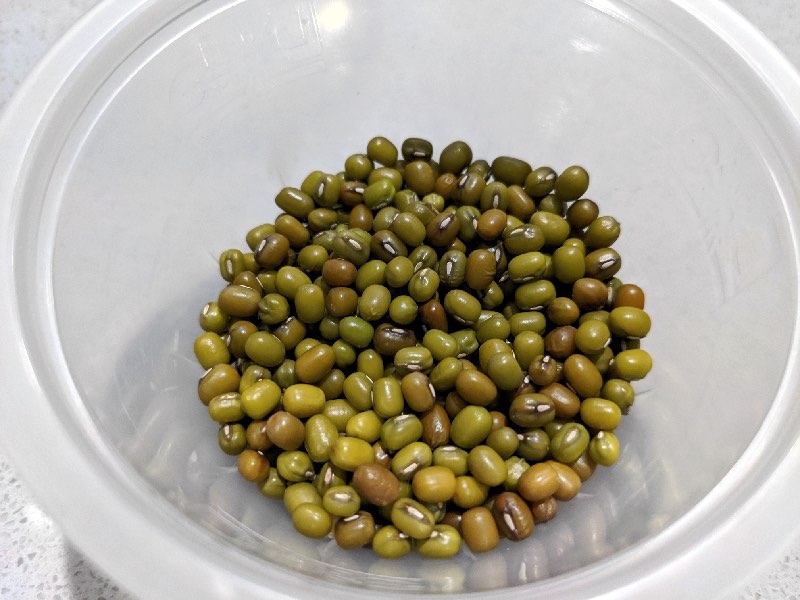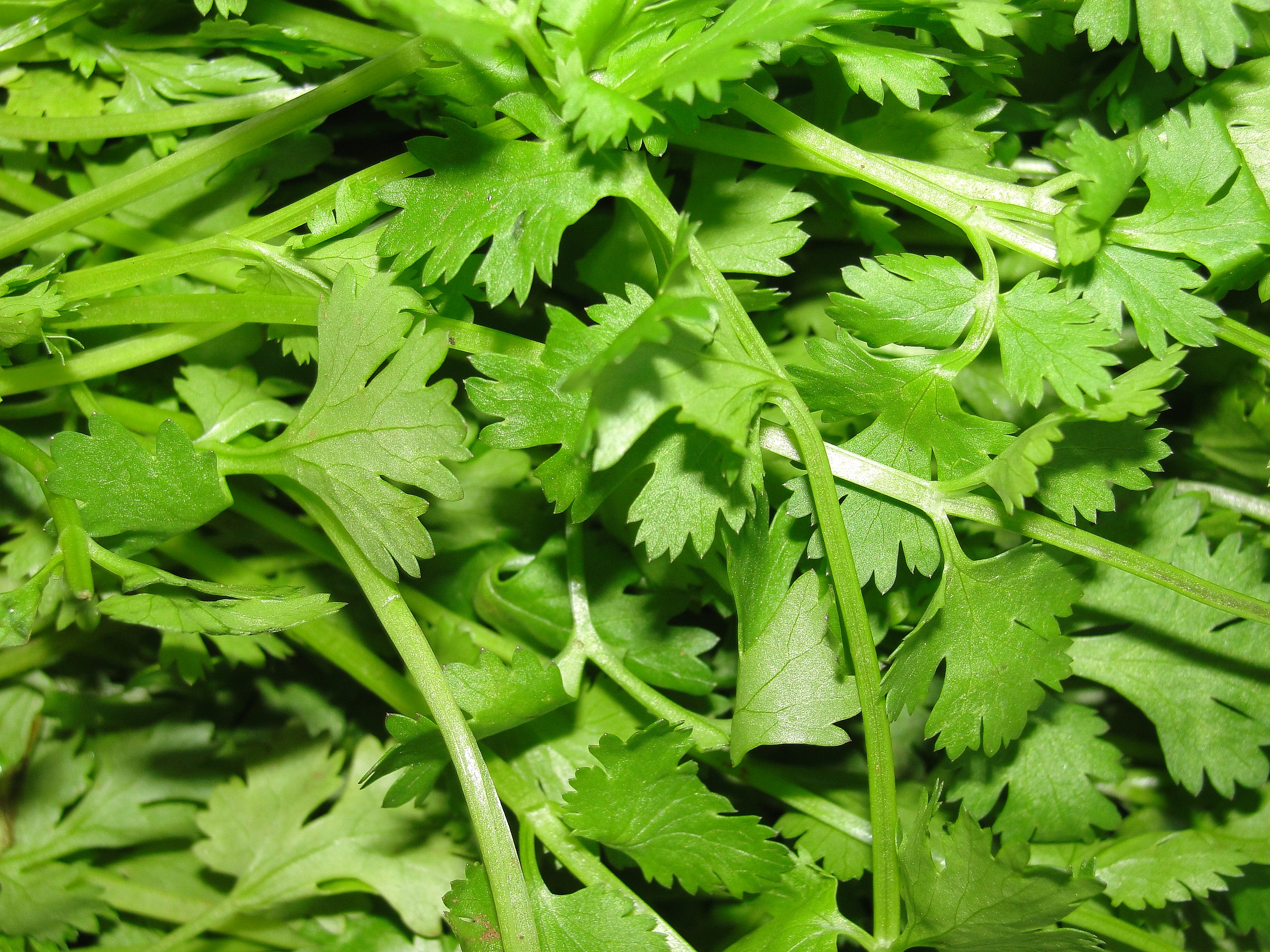Mung Bean vs. Cilantro
Nutrition comparison of Mung Bean and Cilantro
Ever wonder how your favorite foods stack up against each other in terms of nutrition?
We compared the nutritional contents of
mung bean
versus
cilantro
(100g each)
below using 2020 USDA and NIH data[1].
For a quick recap of significant nutrients and differences in mung bean and cilantro:
- Both cilantro and mung bean are high in calcium, dietary fiber and potassium.
- Cilantro has 6.5 times less sugar than mung bean.
- Cilantro is an excellent source of Vitamin A, Vitamin C and Vitamin K.
- Mung bean has more thiamin, pantothenic acid, Vitamin B6 and folate.
- Mung bean is an excellent source of iron and protein.
USDA sources for nutritional information: Mung Bean (Mung beans, mature seeds, raw) and Cilantro (Coriander (cilantro) leaves, raw) . Have a correction or suggestions? Shoot us an email.
Calories and Carbs
calories
Mung bean is high in calories and cilantro has 93% less calories than mung bean - cilantro has 23 calories per 100 grams and mung bean has 347 calories.
| Mung Bean | Cilantro | |
|---|---|---|
| Protein | 27% | 30% |
| Carbohydrates | 70% | 53% |
| Fat | 3% | 16% |
| Alcohol | ~ | ~ |
carbohydrates
Mung bean is high in carbohydrates and cilantro has 94% less carbohydrates than mung bean - cilantro has 3.7g of total carbs per 100 grams and mung bean has 62.6g of carbohydrates.
dietary fiber
Both cilantro and mung bean are high in dietary fiber. Mung bean has 482% more dietary fiber than cilantro - cilantro has 2.8g of dietary fiber per 100 grams and mung bean has 16.3g of dietary fiber.
sugar
Cilantro has 6.5 times less sugar than mung bean - cilantro has 0.87g of sugar per 100 grams and mung bean has 6.6g of sugar.
Protein
protein
Mung bean is an excellent source of protein and it has 10 times more protein than cilantro - cilantro has 2.1g of protein per 100 grams and mung bean has 23.9g of protein.
Fat
saturated fat
Both cilantro and mung bean are low in saturated fat - cilantro has 0.01g of saturated fat per 100 grams and mung bean has 0.35g of saturated fat.
Vitamins
Vitamin C
Cilantro is an excellent source of Vitamin C and it has 463% more Vitamin C than mung bean - cilantro has 27mg of Vitamin C per 100 grams and mung bean has 4.8mg of Vitamin C.
Vitamin A
Cilantro is an excellent source of Vitamin A and it has 55 times more Vitamin A than mung bean - cilantro has 337ug of Vitamin A per 100 grams and mung bean has 6ug of Vitamin A.
Vitamin E
Cilantro has 390% more Vitamin E than mung bean - cilantro has 2.5mg of Vitamin E per 100 grams and mung bean has 0.51mg of Vitamin E.
Vitamin K
Cilantro is an excellent source of Vitamin K and it has 33 times more Vitamin K than mung bean - cilantro has 310ug of Vitamin K per 100 grams and mung bean has 9ug of Vitamin K.
The B Vitamins
Mung bean has more thiamin, pantothenic acid, Vitamin B6 and folate. Both mung bean and cilantro contain significant amounts of riboflavin and niacin.
| Mung Bean | Cilantro | |
|---|---|---|
| Thiamin | 0.621 MG | 0.067 MG |
| Riboflavin | 0.233 MG | 0.162 MG |
| Niacin | 2.251 MG | 1.114 MG |
| Pantothenic acid | 1.91 MG | 0.57 MG |
| Vitamin B6 | 0.382 MG | 0.149 MG |
| Folate | 625 UG | 62 UG |
Minerals
calcium
Both cilantro and mung bean are high in calcium. Mung bean has 97% more calcium than cilantro - cilantro has 67mg of calcium per 100 grams and mung bean has 132mg of calcium.
iron
Mung bean is an excellent source of iron and it has 281% more iron than cilantro - cilantro has 1.8mg of iron per 100 grams and mung bean has 6.7mg of iron.
potassium
Both cilantro and mung bean are high in potassium. Mung bean has 139% more potassium than cilantro - cilantro has 521mg of potassium per 100 grams and mung bean has 1246mg of potassium.
Antioxidants and Phytonutrients
carotenoids
Carotenoids are micronutrients commonly found in plants and some animal products. An example is beta-carotene, the notable carotenoid which is a popular source of Vitamin A.[4][5]
For specific types of carotenoids,
| Mung Bean | Cilantro | |
|---|---|---|
| beta-carotene | 68 UG | 3930 UG |
| alpha-carotene | ~ | 36 UG |
| lutein + zeaxanthin | ~ | 865 UG |
Omega-3 and Omega-6
omega 6s
Comparing omega-6 fatty acids, mung bean has more linoleic acid than cilantro per 100 grams.
| Mung Bean | Cilantro | |
|---|---|---|
| linoleic acid | 0.357 G | 0.04 G |
| Total | 0.357 G | 0.04 G |
Customize your serving size
The comparison below is by weight, but sometimes 100g isn't that intuitive of a measurement for food. View a custom portion comparison (e.g. cups, oz, package).
You can try adding or subtracting the amount of either Mung Bean or Cilantro .
Mung Bean g
()
|
Daily Values (%) |
Cilantro g
()
|
|||||
|---|---|---|---|---|---|---|---|
| KCAL % |
|
5% | calories | 5% |
|
KCAL % | |
| G % |
|
5% | carbohydrates | 5% |
|
G % | |
| G % |
|
5% | dietary fiber | 5% |
|
G % | |
| G | 5% | sugar | 5% | G | |||
| G % |
|
5% | total fat | 5% |
|
G % | |
| G % |
|
5% | saturated fat | 5% |
|
G % | |
| G | 5% | monounsaturated fat | 5% | G | |||
| G | 5% | polyunsaturated fat | 5% | G | |||
| G | 5% | trans fat | 5% | G | |||
| MG | 5% | cholesterol | 5% | MG | |||
| MG % |
|
5% | sodium | 5% |
|
MG % | |
| 5% | Vitamins and Minerals | 5% | |||||
| UG % |
|
5% | Vitamin A | 5% |
|
UG % | |
| MG % |
|
5% | Vitamin C | 5% |
|
MG % | |
| IU % |
|
5% | Vitamin D | 5% |
|
IU % | |
| MG % |
|
5% | calcium | 5% |
|
MG % | |
| MG % |
|
5% | iron | 5% |
|
MG % | |
| MG % |
|
5% | magnesium | 5% |
|
MG % | |
| MG % |
|
5% | potassium | 5% |
|
MG % | |
| MG % |
|
5% | thiamin (Vit B1) | 5% |
|
MG % | |
| MG % |
|
5% | riboflavin (Vit B2) | 5% |
|
MG % | |
| MG % |
|
5% | niacin (Vit B3) | 5% |
|
MG % | |
| MG % |
|
5% | Vitamin B6 | 5% |
|
MG % | |
| MG % |
|
5% | pantothenic acid (Vit B5) | 5% |
|
MG % | |
| UG % |
|
5% | folate (Vit B9) | 5% |
|
UG % | |
| UG % |
|
5% | Vitamin B12 | 5% |
|
UG % | |
| MG % |
|
5% | Vitamin E | 5% |
|
MG % | |
| UG % |
|
5% | Vitamin K | 5% |
|
UG % | |
| G % |
|
5% | protein | 5% |
|
G % | |
| UG % |
|
5% | biotin (Vit B7) | 5% |
|
UG % | |
| MG % |
|
5% | choline | 5% |
|
MG % | |
| MG % |
|
5% | chlorine | 5% |
|
MG % | |
| UG % |
|
5% | chromium | 5% |
|
UG % | |
| MG % |
|
5% | copper | 5% |
|
MG % | |
| UG % |
|
5% | fluoride | 5% |
|
UG % | |
| UG % |
|
5% | iodine | 5% |
|
UG % | |
| MG % |
|
5% | manganese | 5% |
|
MG % | |
| UG % |
|
5% | molybdenum | 5% |
|
UG % | |
| MG % |
|
5% | phosphorus | 5% |
|
MG % | |
| UG % |
|
5% | selenium | 5% |
|
UG % | |
| MG % |
|
5% | zinc | 5% |
|
MG % | |
| G | 5% | Water | 5% | G | |||
| G | 5% | Starch | 5% | G | |||
| G | 5% | Alcohol | 5% | G | |||
FAQ
Does cilantro or mung bean contain more calories in 100 grams?Mung bean is high in calories and cilantro has 90% less calories than mung bean - cilantro has 23 calories in 100g and mung bean has 347 calories.
Does cilantro or mung bean have more carbohydrates?
By weight, mung bean is high in carbohydrates and cilantro has 90% fewer carbohydrates than mung bean - cilantro has 3.7g of carbs for 100g and mung bean has 62.6g of carbohydrates.
Does cilantro or mung bean contain more calcium?
Both cilantro and mung bean are high in calcium. Mung bean has 100% more calcium than cilantro - cilantro has 67mg of calcium in 100 grams and mung bean has 132mg of calcium.
Does cilantro or mung bean contain more iron?
Mung bean is an abundant source of iron and it has 280% more iron than cilantro - cilantro has 1.8mg of iron in 100 grams and mung bean has 6.7mg of iron.
Does cilantro or mung bean contain more potassium?
Both cilantro and mung bean are high in potassium. Mung bean has 140% more potassium than cilantro - cilantro has 521mg of potassium in 100 grams and mung bean has 1246mg of potassium.

